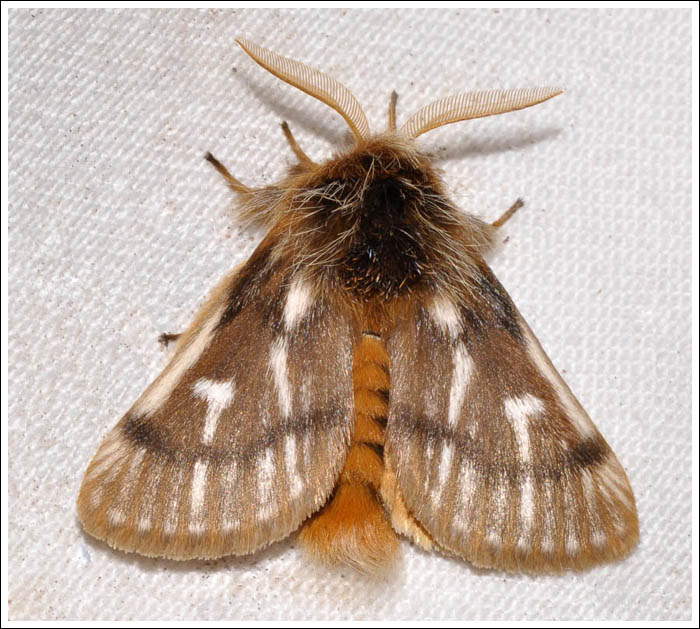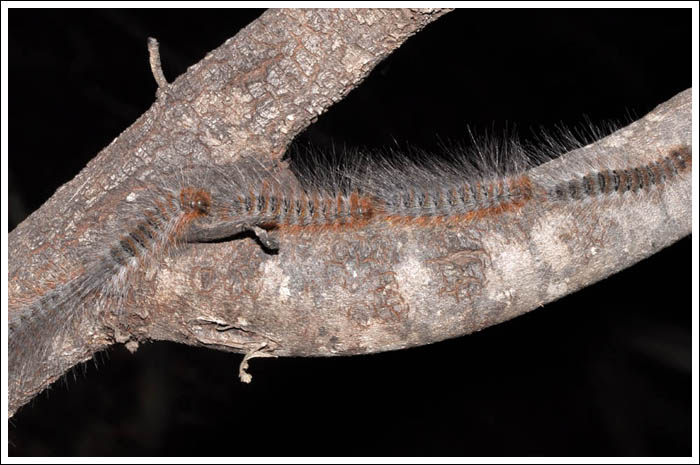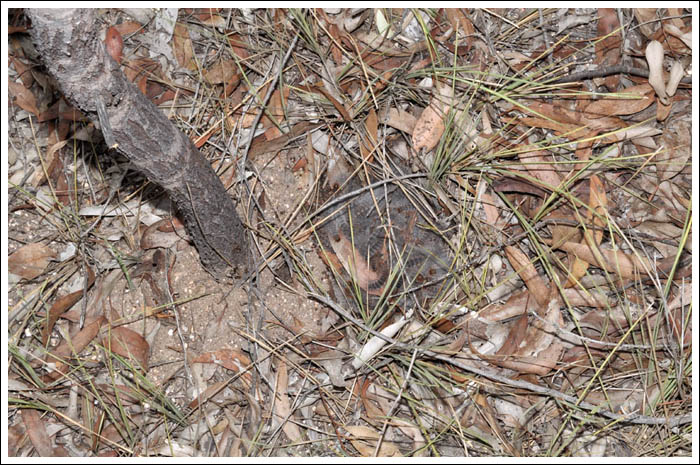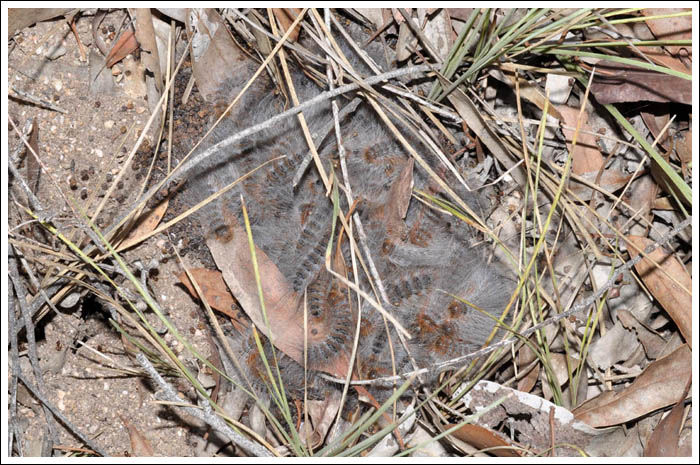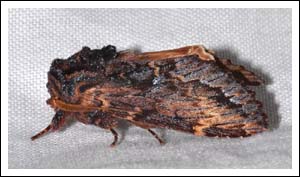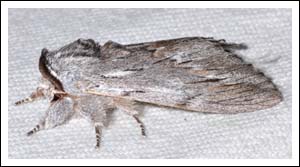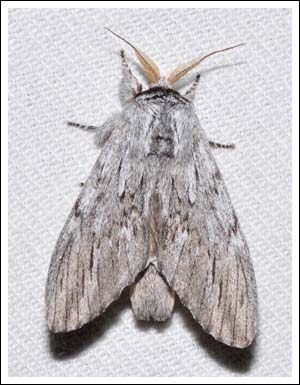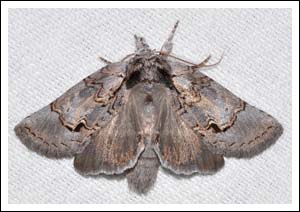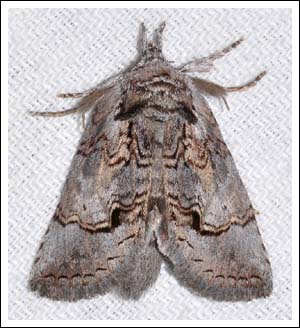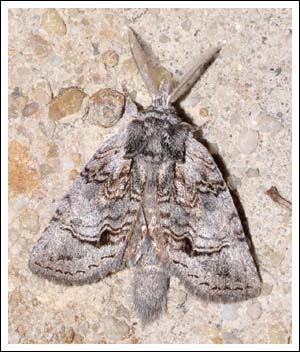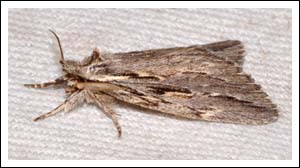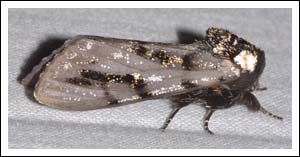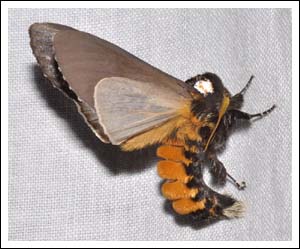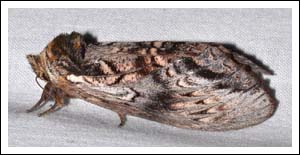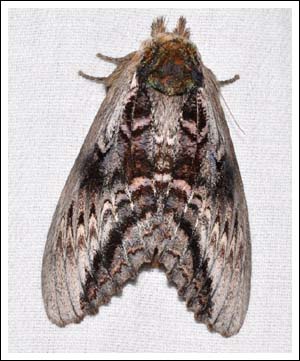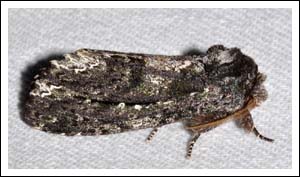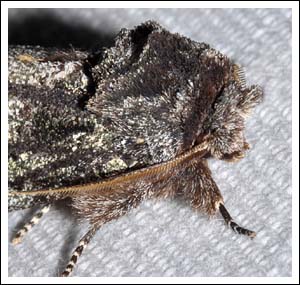In other words the larvae of the moth Ochrogaster lunifer, (Notodontidae) about which Moths of Victoria Volume 2 notes “Ochrogaster is believed to contain several species throughout Australia” and “For the moment Victorian species are included here under the name lunifer”
The streaked form is the one that has been encountered in the local area.
All images except verticals will enlarge with a click.
On his moth site, Don Herbison-Evans suggests that the types of shelters constructed may be pointers to different species, but more on that a little later. On a recent night in the box/ironbark bush, a look around with a torch while waiting for moths to arrive at the sheet paid off with the discovery of a procession of the larvae making their way up a tall Golden Wattle to feed on the foliage. All photographs were taken with the 100 mm Tokina macro lens, and of course flash.

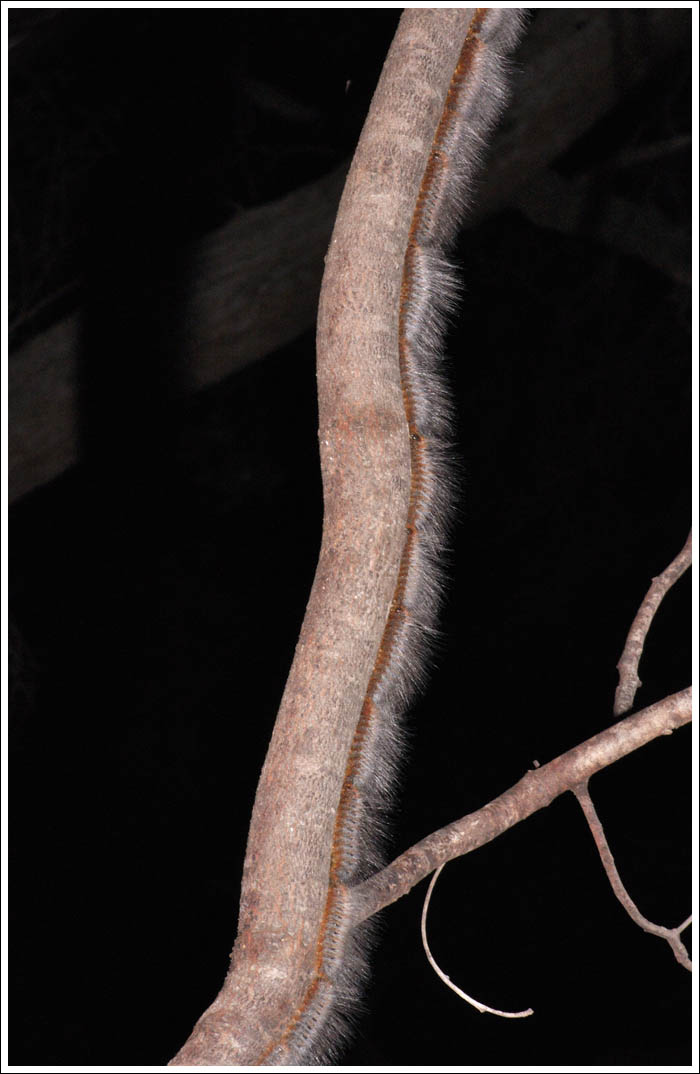
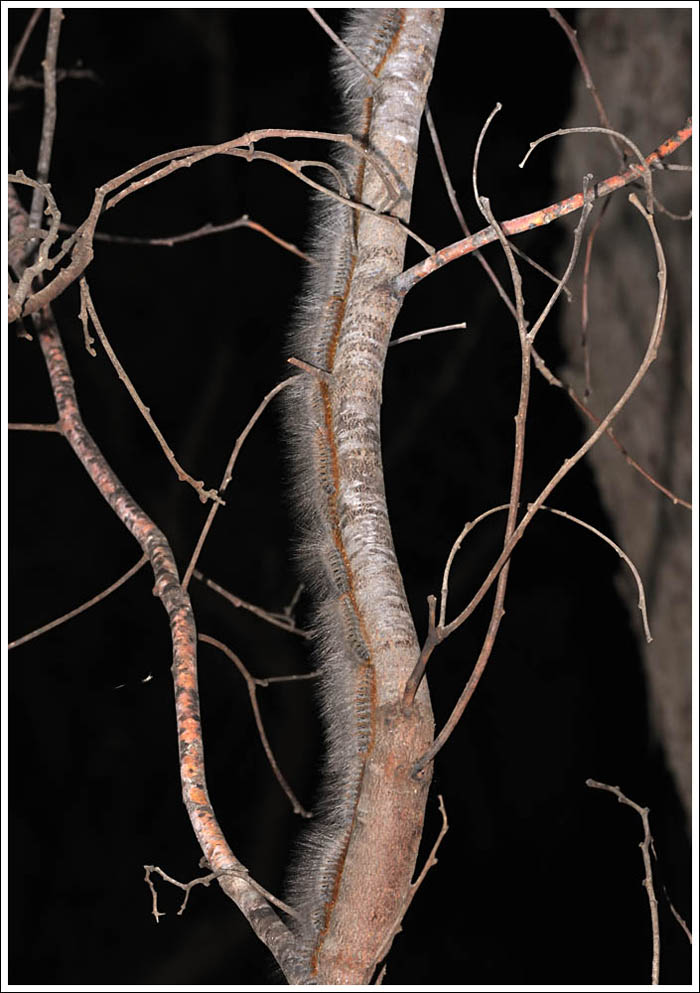
The caterpillars generally make bag shelters from silk, frass, and other debris, located either on the ground at the base of the tree, or up on the trunk or a branch. A return trip to the site was made the next day to further investigate, and there they were on the ground next to the trunk, in a tight group with no sign of any bag shelter.
Is the lack of a shelter a characteristic of this particular local population? Who knows, perhaps the answer will be forthcoming sometime in the future after further study of the genus. And to repeat a previously published warning, neither the caterpillars or the moths should be touched, the barbed filaments they carry can penetrate the skin and cause urticaria and a number of serious conditions. Children are particularly at risk.
References and further reading,
Moths of Victoria Volume 2
Australian Moths.

